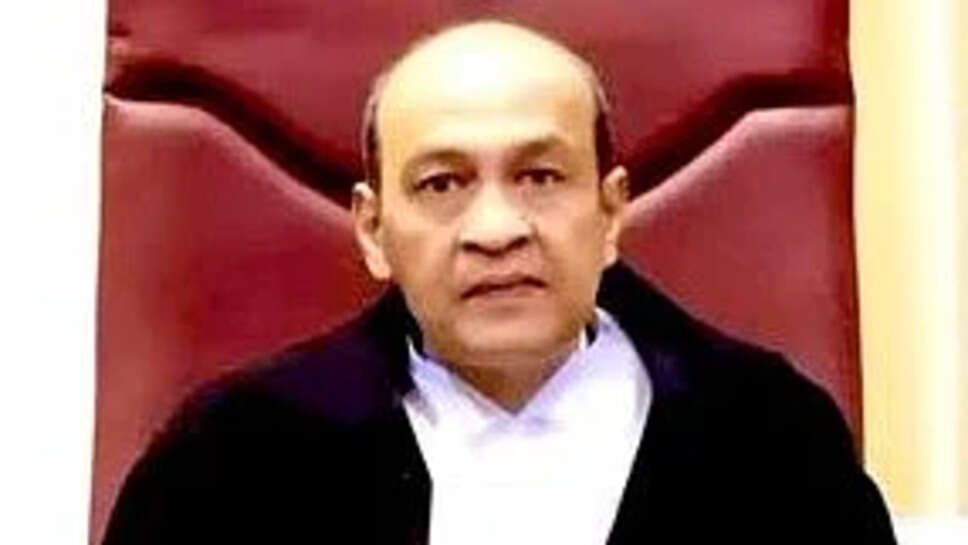Controversial Cash-Row: Lower House to Vote on Removing Supreme Court Judge Varma

The Lok Sabha is poised to take a pivotal step by considering a motion that seeks to initiate the removal of Supreme Court Judge Justice Yashwant Varma. This dramatic development comes in the wake of the controversial "cash row" scandal, which has raised questions about judicial conduct, the integrity of the highest court, and the balance of power among India’s democratic institutions.
1. What Sparked the Motion?
The motion in question stems from allegations levied against Justice Varma, suggesting that he accepted substantial cash gifts. Though details remain contested, the core of the controversy is whether a sitting justice took money in contravention of legal norms and ethical standards. Opposition parties, including prominent voices in the Lok Sabha, have deemed the allegations serious enough to warrant an investigation and, ultimately, a removal motion.
Lok Sabha Speaker’s office confirmed receipt of the notice by several MPs, and a parliamentary committee will evaluate whether due process has been followed. Only after clear finding by the committee can the House decide on initiating removal proceedings.
2. Constitutional Roadmap for Judicial Removal
India’s Constitution mandates a rigorous three-stage process for removal of a Supreme Court judge:
-
Filing of Motion: Minimum of 100 Lok Sabha members must endorse the notice.
-
Parliamentary Investigation: Both Lok Sabha and Rajya Sabha must form an inquiry committee, consisting of judges and members of parliament, to examine the allegations.
-
Majority Vote: A two-thirds majority of MPs in each house is required to recommend removal to the President.
Critically, removal is not automatic; it depends on conclusive evidence, due process, and bipartisan consensus.
3. Political Context and Repercussions
The decision to table the motion has thrown up a charged political environment. The Opposition bloc has seized upon the case as an opportunity to highlight alleged judicial excesses and demand accountability. By bringing the issue into the Parliament, they emphasize that even judges are subject to democratic scrutiny.
The ruling coalition, while promising fair investigation, has condemned the publicization of one-sided allegations ahead of due process. They caution against undermining judicial independence—vital for the separation of powers—but concede that serious charges cannot be ignored.
4. Proponents’ Arguments
Supporters of the motion advance several points:
-
Preserving Judicial Integrity: High court justices are held to elevated ethical standards; perception of misconduct can erode public trust.
-
Rule of Law Over Status: No one is exempt from legal or moral accountability, regardless of their official position.
-
Democratic Mandate: Elected representatives have a legitimate responsibility to examine and address public concerns regarding misconduct by state officials, including judges.
5. Opposition’s Concerns
Detractors caution:
-
Potential Threat to Judicial Independence: Premature political intervention could intimidate judges from making bold decisions, altering the judiciary’s nature.
-
Presumption of Innocence: Allegations must be established through formal inquiry; raising removal motions based on rumors or media leaks is dangerous.
-
Setting Precedent: If MPs can easily initiate removal motions, the judiciary risks being politicized, hindering its ability to check executive excess.
6. Procedural Mechanics in Parliament
Assuming the notice is validly submitted, the Lok Sabha Speaker will:
-
Refer the notice to the Privileges and Ethics Committee to assess whether it meets constitutional criteria.
-
If satisfied, the motion is tabled for debate, and a vote taken.
-
If passed, a joint parliamentary committee (JPC) will probe the allegations.
-
Only if the JPC determines guilt and both houses pass the motion by constitutional majority, can it go to the President, who will issue a removal order.
This arduous route implies robust scrutiny—only the gravest charges have historically proceeded this far.
7. The Role of the Judiciary
Constitution requires the Supreme Court to recognize the motion but remain impartial. If a Privileges Committee or Parliament finds merit, the Court may provide details such as declarations filed by Justice Varma, ethics committee reports, or other relevant documentation. Yet, judgment on removal lies purely with Parliament.
Generally, the Court maintains the principle of judicial sovereignty in legal matters, but upholds Parliament’s authority in removal proceedings.
8. Potential Scenarios
The controversy could play out in several ways:
-
Motion Dismissed Early: If deemed frivolous, the Lok Sabha might reject the notice, quelling the matter.
-
Motion Admitted, JPC Finds No Guilt: Serious inquiry but no removal, avoiding political overreach.
-
Motion Admitted, JPC Finds Guilt, Parliament Votes: Unprecedented outcome—test of democratic institutions and norms.
-
Stalemate: If the motion is hung up in committee or procedural dispute, it may fade from public focus without formal resolution.
9. Wider Implications for Democratic Oversight
This motion brings into sharp relief a core tension in democratic systems: How do you hold unelected judges accountable without eroding judicial independence? While public officials are elective and periodically vetted by voters, judges are appointed and expected to act impartially. The removal process is one of the few democratic controls in place—but its infrequent use and high threshold suggest it is to be used sparingly, only under extraordinary circumstances.
Scholars and lawmakers argue this kerfuffle is a rare test of constitutional design—do democratic mechanisms work when applied to non-political offices? The outcome could influence how the judiciary and the legislature stand in future crises.
10. Public Opinion and Media Narrative
Public sentiment appears divided:
-
Sympathy for Accountability: Many citizens believe no public figure should be immune, especially on integrity issues.
-
Fear of Politicization: Others worry this could begin a slippery slope eroding trust in the judiciary’s impartiality.
-
Koncept of Checks and Balances: Some see this as the system working: allegations trigger debate, inquiry, and a transparent process.
Social media, think tanks, and legal experts are weighing in—reflecting national anxiety about maintaining both judicial dignity and democratic relevance.
11. What Happens Next? Timeline to Watch
-
Week 1–2: Submission, referral, and possible rejection or admission of the notice.
-
Month 1–2: Committee stage—ethics committee evaluates.
-
Month 3–5: If admitted, Lok Sabha debate and vote.
-
Month 6–9: JPC investigation, presentation of findings.
-
Month 10–12: Final parliamentary vote; if passed, forwarded to President for order.
However, any stage could collapse quickly depending on political alignment, public momentum, or judicial interpretation.
A Defining Moment in India’s Democracy
The Lok Sabha’s move to take up a motion seeking Justice Yashwant Varma’s removal marks one of the most significant confrontations between legislature and judiciary in recent memory. Whether it proceeds to full-blown inquiry—or fizzles out—will reveal much about India’s resilience of constitutional checks and the maturity of democratic accountability.
A credible outcome would balance justice and independence. An ill-considered political whiplash could prematurely threaten institutional trust. In either case, the nation watches, recognizing that at the heart of this row lies a question about the soul of Indian democracy itself.
